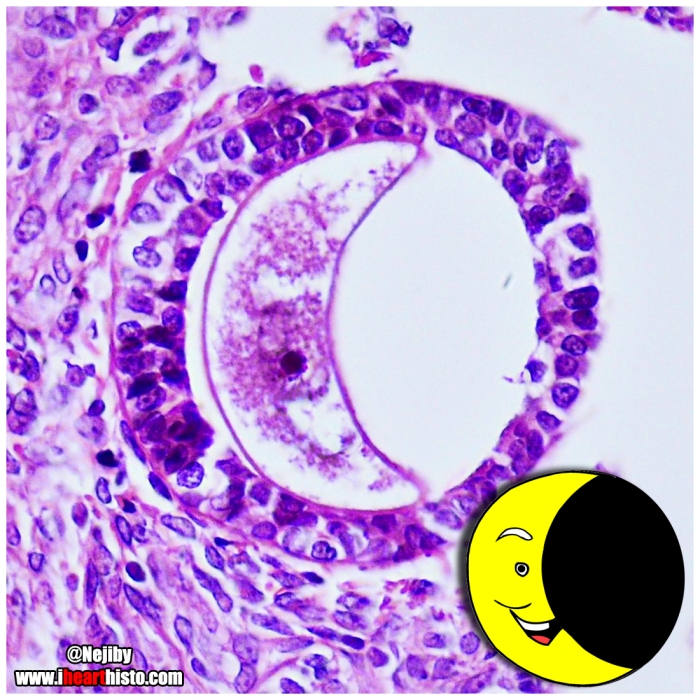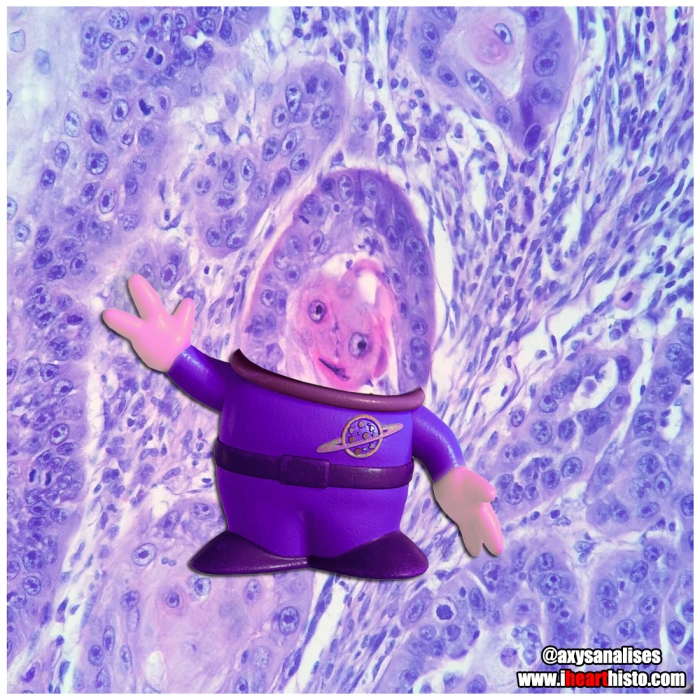
🎶💩 The Choir in Your Colon 💩 🎶
This is nothing but mucus to my ears!
Let your colon sing!
And toot a harmony from your butt flute!
From the musical histologist @Chapman_Histo on Twitter
The choir is composed of transverse sections through the crypts of Lieberkuhn that are located in the mucosa of the colon. Thee crypts are intestinal mucus glands. The majority of cells that line them are goblet cells (you see the blue-purple cells interspersed around the singing mouths?) that synthesize and secrete mucus. This mucus is then released into the lumen of the crypt (the open O-mouths) and is squeezed along the gland as the gut contracts and moves. The mucus is eventually spewed out onto the inner lining of the colon. It is here that it acts as a lubricating substance to allow your feces (which have had most of the nutrients and much of the water absorbed form them already – so they are usually fairly dry) smooth passageway into your rectum and along your anal canal when you defecate. This helps prevent damage to the lining of you colon every time you poop and stop things from getting all constipated up in there.
💩
So next time you have a smooth, contemporary classical movement in C-major – just think about the important role these singing crypts of Leiberkuhn and their goblet cells played in making it happen and rejoice!
💩








